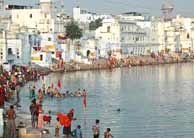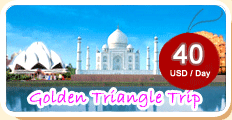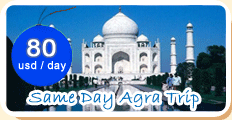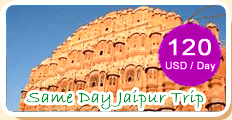
Pushkar Tour

 PUSHKAR- the 'Pilgrim City' is a picturesque town 14 kms. from Ajmer, known for its temples and lake, the Nag pahar (Snake Mountain), which forms a part of chain of the Aravali range, stands between Ajmer and Pushkar. The road from Ajmer to Pushkar is a very interesting drive as the road winds through the Nag Pahar, leading to the ancient lake. The town situated around the beautiful lake is surrounded on the three sides by hills, while the fourth side cordoned by the sands which have drifted from the plains of Marwar.
PUSHKAR- the 'Pilgrim City' is a picturesque town 14 kms. from Ajmer, known for its temples and lake, the Nag pahar (Snake Mountain), which forms a part of chain of the Aravali range, stands between Ajmer and Pushkar. The road from Ajmer to Pushkar is a very interesting drive as the road winds through the Nag Pahar, leading to the ancient lake. The town situated around the beautiful lake is surrounded on the three sides by hills, while the fourth side cordoned by the sands which have drifted from the plains of Marwar.It is one of the most revered places of Hindus and referred as Tirth Raj' or the king among pilgrims, just as Banaras is their 'guru' or preceptor. No pilgrimage to Badri Narain (Himalayas), Jagannath (Orissa), Rameshwaram (Tamil Nadu) and Dwarka (Gujarat) the four principal Hindu places of pilgrimage is complete till the pilgrims bath in the sacred waters of Pushkar.
PUSHKAR PALACE
Pushkar Palace is the finest Lake Palace Hotel of the country, which is situated on the bank of the lake and center of the town from where Guest, can see the lake, bunch of palaces, hills, sand dunes, hundreds of temples, the sunset .It creates a great mag.
The Hotel is classified by the Govt. of India, Deptt. of Tourism as a " Heritage Hotel" and has the finest accommodation in town, which offers memorable stay to the guests by providing royal comforts in traditional Rajasthani style. Hotel Pushkar Palace has well appointed 28 Deluxe Rooms and 25 Suites with all facilities in the rooms. Hotel has two floors, most of the rooms including all suites are overlooking the lake and has garden view.
PUSHKAR LAKE
Pushkar Lake is a very beautiful tourist spot in Pushkar Rajasthan. Pushkar Lake in Rajasthan is a natural water body surrounded by hills and sand dunes and presents a perfect site for the annual religious celebrations. The famous cattle fair held in the month of October-November is held by the Pushkar Lake.
Every year thousands of devotees throng the lake on the full moon day in the month of Kartik to take a holy dip in the lake. Pushkar fair held along the banks of Lake Pushkar, is well-known for its Camel trading and other attractive activities. Pushkar Lake is the eminent water body which has been successful in attracting tourists since long. Pushkar Lake in Rajasthan is also famous for its contribution in the local fairs and festivals. During the big local festivals the banks of the lake in Pushkar is adorned with earthen lamps, electric bulbs and so on. Pushkar Lake presents beautiful scenic view which matches the effervescence, vigor and brightness of traditional fairs and festivity.
BRAHMA TEMPLE
Just 11 km northeast of Ajmer is Pushkar, a small town sacred to the Hindus. The sanctity of the lake for Hindus is equal to that of Mansarovar in Tibet. According to tradition, a bath in its waters is as essential as pilgrimages to Badrinath, Dwarka and Puri, the traditional at least once in a lifetime places of pilgrimage.
The Padma (lotus) Puran (sacred legend) describes Pushkar as the place where Brahma, Lord of Creation killed a demon with a lotus. The petals fell at three spots where lakes emerged. Pushkar is the most important of them, for Brahma performed a yagna here on the full moon of Kartik (October/November). His consort, Savitri, could not be present on the occasion, so Brahma hastily married a Gurjar girl, Gayatri. When Savitri appeared she was furious. She cursed all those present, and said that Brahma would be worshiped at Pushkar only.
PUSHKAR GHATS
The Pushkar Ghat is holy to the Hindus and religious ceremonies are performed simultaneously as camels are being traded. The night at the fairground takes on a Carnival atmosphere. The ferris wheel attracts line-ups of giggling Rajput women in their richly coloured saris and sparkling bangles that stretch from wrist to shoulder. Roadside vendors sell pots, pans, bangles, saris, belts and other various items. Campfires dot the dark desert like bright stars as the evening meal is prepared. Originally begun as a festival to honor Lord Brahma, the creator of the universe, it also became the biggest camel fair on earth. The 200,000 pilgrims, farmers and camel drivers who attend it each year are joined by 50,000 camels and cattle, all descending on the small town of Pushkar at the edge of the Marusthali Desert. They, in turn, are joined by Hindu holy men, vendors, musicians, actors, tattoo artists, marriage brokers, outsiders and tourists in a combination county fair, hoedown, shivaree and Chautauqua that lasts seven days.
TARAGARH FORT
Taragarh Fort, was built in 1354 A.D. on top of 'Nagpahari Hill' by Raja Ajairaj Chauhan. The interesting fact is that it is the first fort in India to be constructed on a hillock. Taragarh Fort was a vital center for military operations during the Mughal rule in Ajmer. The stupendous stone fort is a witness of the royalty and magnifice of the bygone era. The intricate carvings, six imposing gates and a thick crenelated wall guard makes Taragarh Fort one of the most splendid and must watch site in Ajmer.
PUSHKAR CATTLE FAIR
'Pushkar Camel Fair, while on a tour to this colourful desert land, you must travel to Pushkar Fair to have a glimpse of the lifestyle, traditions and culture of the local people. The fair is held on the day of Karthik Purnima in the month of October / November every year. The fair is held in the sacred city Pushkar which houses the only Brahma Temple in the world. During the fair devotees and tourists take a bath in the holy Pushkar Lake as it is considered auspicious.
MAN MAHAL
Raja Man Singh I of Amer built this royal house - the largest in Pushkar - located on the east of the sacred Sarovar Lake in pushkar. It affords a clear view of the banks and temples located around the lake. It was built as a royal guest house of Raja Man Singh I for his trips to the holy town. This traditional guest house has now been converted into a hotel.
NAG PAHAR
Pushkar is separated from Ajmer, by the Nag Pahar (Snake Mountain). This beautiful lake surrounded by bathing ghats, has its religious significance, rooted in a myth. A lovely and gigantic fair is held every year, on Kartik Poornima (full moon in Pushkar Fair October-November). About 1,00,000 pilgrims gather here, to take a dip in the holy lake. The fair is also the biggest camel market. Besides camels, horses and bullocks are sold here. The colourfully dressed people enhance the exuberant mood of the fair. Pushkar abounds in temples, the special attraction being, the temple of Lord Brahma, the only temple in India, dedicated to Brahma.
RAGHUNATH TEMPLES
Raghunath Temple in Pushkar, the older one is dedicated to lord Vishnu and was constructed in the year 1823. Rama, the epic hero of the Ramayana, is the presiding deity in this temple. He is supposed to be an avatar, or incarnation of the Lord Vishnu.
Lord Vishnu is believed to be the preserver, Lord Shiva the destroyer and Lord Brahma the creator. They jointly constitute the Indian Holy Trinity. According to the Hindu Mythology Lord Vishnu reincarnated in various forms to save his followers from disasters and one such is Lord Rama , whose life have been portrayed in the Ramayana.
AJMER Ajmer situated in the green oasis wrapped in the barren hills has been a witness to an interesting past. The city was founded by Raja Ajay Pal Chauhan. It is a popular pilgrimage centre. Especially famous is the Dargah Sharif-tomb of the Sufi saint Gareeb Nawaz Khwaja Moinuddin Hasan Chisti( R. A.).PUSHKAR is a town near Ajmer,and is an important tourist destination,famous for Pushkar Lake and the 14th century Hindu temple to Brahma.Pushkar is also famous for its annual Camel Fair.
KUCHAMAN FORT
The Kuchaman Fort, a Heritage Hotel near Jaipur, Rajasthan. Ideally situated with a proximity to key tourist destinations in India. Pushkar, Ajmer, Jaipur and Samode. The scenic beauty and picturesque setting of this fort makes you travel back in time. This Heritage Hotel and Resort offers more than just accommodation..... activities include Horse Safaris, Camel Safaris, Village Safaris, Bird watching and Temple excursions. Our special Kuchaman City excursion takes you through old heritage Havelis and other memorable lanes.
KISHANGARH
Kishangarh is a good tourist spot. Maharaja Kishan Singh erected the Kishangarh Palace in the year 1611 AD. Formerly ruled by the Rathod Clan, Kishangarh has a rich historic past. A Tour to Kishangarh is sure to be a very enchanting experience.
A Tour to Kishangarh would definitely be one of the memorable experiences in your life. It is a wide known fact that the finest miniature painting schools were first established in Kishangarh. This was patronized by Maharaja Sawant Singh. He was a king with a poet's mind and a great taste for art and poetry. Kishangarh owes a lot of its present fame to this poet ruler.
ROOPANGARH FORT
Roopangarh fort was built by Maharaja Roop Singh Rathore in the year 1648. The fort was originally built for the war purposes and houses various ancient passageways, jails, battlements, granaries, armories and foundries. The artistic and intricately carved decor makes Roopangarh Fort an architectural marvel. The fort is a witness of the royalty, grandeur and splendor of the bygone era.
JAGAT SINGH PALACE
Jagat Singh Palace is situated in Pushkar in Rajasthan, and it is home to well appointed rooms with a golden opportunity being provided to the guest to discover the holy "kasba" of Pushkar and along with that, Hotel Jagat Singh Palace is home to 36 air conditioned rooms provided with all the modern luxuries.
SAVITRI TEMPLE Savitri Temple in one of the most renowned one out of 400 temples in Pushkar. According to the Hindu mythology Savitri is the first wife of Lord Brahma. When He was all set to start a Yagna on earth in the place of Pushkar (determined by drooping a lotus flower), Savitri's presence was the prerequisite. But She had kept Him waiting. Lord Brahma, irritated at this, married Gayatri the milkmaid to start the yagna on the most auspicious moment.
WARAH TEMPLE
The Warah temple is another famous temple of Pushkar. It houses an image of lord Vishnu in the incarnation of the wild boar. The temples of Brahma and Warah are considered equally important. It is believed that king Anaji Chauhan built the Warah temple. According to mythology it is a very important temple and is believed that Vishnu came on the earth in the incarnation of Warah (wild boar) to kill the demon Hirnayaksh and liberate the land from his atrocities.
























